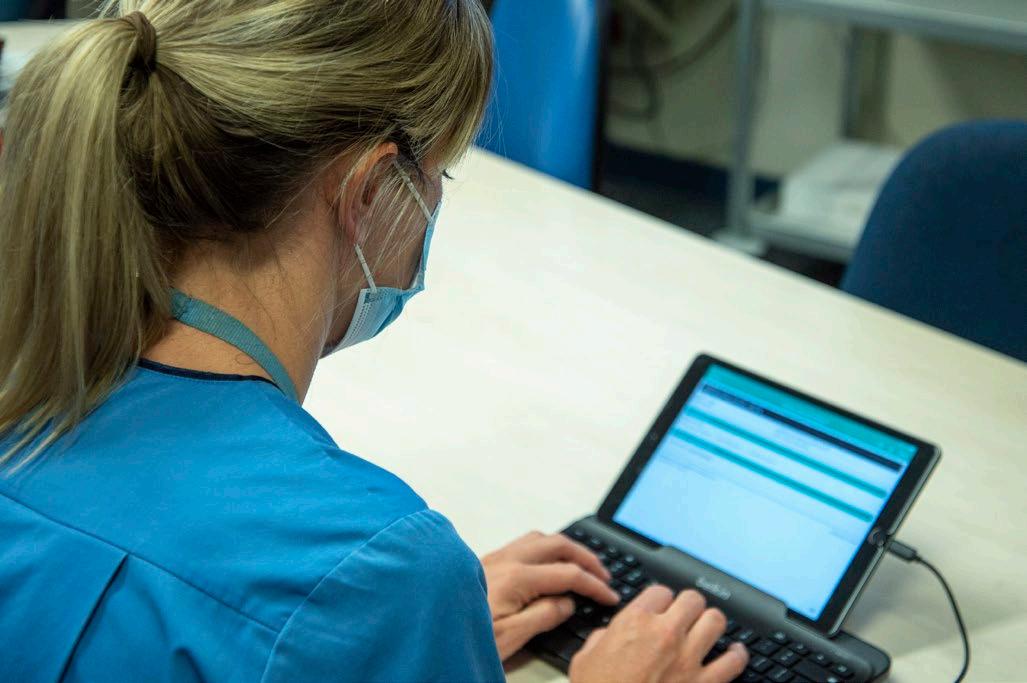
2 minute read
› Cortex enabling easier sharing of information in Maternity
20 December 2021
Staff looking after patients in Maternity now have easier access to information on the person in their care after Cortex was rolled out in the department. Cortex is an app for iPhones and iPads designed to improve the quality of patient care and the efficiency of hospital care teams. It digitises patient notes and makes them instantly available to all staff in a patient's care team. Since early 2018, a multidisciplinary team at Canterbury DHB has been working to digitise the care coordination components of inpatient records. This includes clinical notes, tasks, orders and clinical communication using Sense Medical’s Cortex platform. The go-live of Maternity is the final step in the project. As a real-time point of care platform, Cortex enables the clinical care team to collaborate and communicate, ensuring the patient journey is visible to the entire care team. The application was developed in collaboration with Canterbury District Health Board through a Via Innovations initiative, which was set up to support emerging health technology solutions. Canterbury DHB Midwifery Educator Tina Hewitt says the Cortex forms are now in use for all māmā and pepi in Christchurch Women’s Hospital Maternity – for their admissions, clinical summaries, risk screening and pathways. “For the past four months Midwife Team Leader Sonya Kemp and Obstetric Senior Medical Officer Anne Coolen have been creating these forms in Cortex and testing them out with our clinical team.”
Advertisement
Cortex is making it easier to share information between maternity team members. “With electronic documentation instead of written notes, we can all access important clinical information via iPads or through desktop computers on Health Connect South,” she says. Maternity care is complex as it incorporates so many health professionals including hospital-employed midwives, community midwives (lead maternity carers (LMCs)), obstetric doctors, neonatal nurses and doctors, anaesthetic doctors, operating theatre nurses and the wider allied health team.
“We have been working on a Cortex system that incorporates everyone’s needs. Another factor that makes maternity care ‘special’ and a little tricky at times is having the mother and the baby (or babies) requiring separate documentation at birth and postnatally, but with some data being shared between both. “We have got there with some pretty cool functionality and it will only get better.” There are a few areas where the maternity system remains on paper notes, for example interprofessional documentation for the duration of labour, and for maternity and neonatal observations on early warning score charts. “The team are working with our LMC midwife colleagues in the community, providing resources and education sessions to assist with the transition from paper documentation to Cortex electronic forms.
“There have been some bugs to fix, as expected with any new electronic system, but the maternity team have embraced the Cortex rollout with enthusiasm and positivity”, Tina says. Several electronic systems operate in health, with staff moving between MedChart, Floview, Trendcare, Health Connect South and now Cortex.
“We have huge admiration for the way these systems have been embraced by the Maternity team, especially during a period of COVID-19 pandemic and strike action. We are hoping to roll Cortex out to the community maternity units in early 2022 and continue to see how we can increase use of Cortex in the Birthing Suite.”
A midwife using the Cortex application










